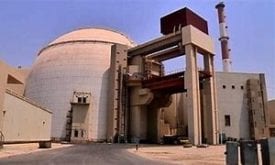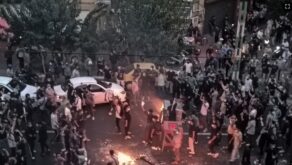Radiofarda – The year 2019 brought deadly floods that swept across Iran for nearly two months and demolished at least 25,000 houses and damaged another 60,000 as well as many other urban and rural structures, causing billions of dollars in losses, and ended with a nationwide unrest that reportedly left up to 1,500 dead and as many as 8000 in jail.
The year which started with a natural catastrophe ended with a human tragedy as a result of violent suppression of dissent. In the same way that floods returned to Iran toward the end of the year, forecasts indicate likely recurrent unrest as suppression may have silenced some, but the underlying frustration felt by the population remains in place.
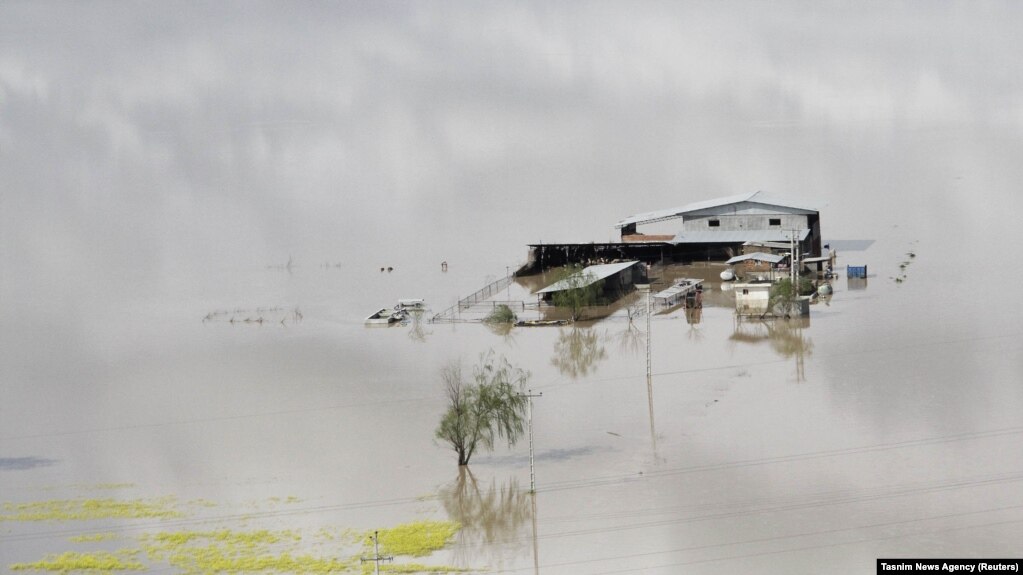
A Lacklustre Celebration — Shortly after the start of the year, the Islamic Republic celebrated its 40th anniversary. The landmark date offered a unique opportunity to the Islamic Republic’s critics to remember its failures and mischiefs.
On the other hand, the country’s long-standing economic crisis which was exacerbated by U.S. sanctions did not leave much reason to celebrate. Coupled with corruption, mismanagement and lavish spending to gain regional influence, the economic crisis had already eroded much of the regime’s legitimacy and wasted its resources.
The attitudes toward the anniversary among the public was marked by the viral hashtag “40 years of defeat” under which Iranian netizens and foreign observers listed embarrassing failures the Islamic Republic experienced during four decades.
The list included violations of human rights, the domination of non-elected institutions over elected ones, the authoritarian rule of the Supreme Leader, and wasting the nation’s resources in proxy wars all over the Middle East and declining per-capita income, turning a once hopeful nation into a largely pessimistic populace.
The celebrations ended up to be lacklustre, as the government was out of pocket to spend much on the event, and the nation, like always, paid very little attention to the regime’s propaganda which was highlighted by the
announcement of Supreme Leader Khamenei’s Vision for the Islamic Republic’s future aka “Second Phase.”
Khamenei’s official website on February 13 published a document entitled “The Second Phase of the Revolution Statement” that offered a set of guidelines particularly for Iranian youths about the state of affairs in the future as he envisages it. However, the document was mainly about the past and contained little fresh insight. It expressed strong opposition to Western lifestyle which is increasingly more popular among Iranian youths, said Khamenei.
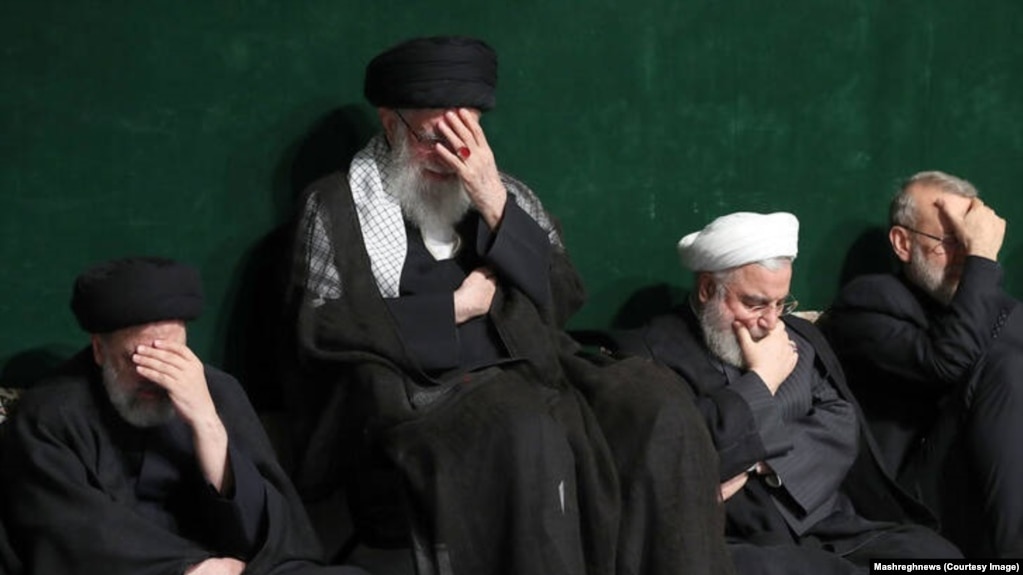
Floods Wash Away Regime’s Integrity –
As floods swept across Northern, Western and Southern Iran in March and April, the country’s officials used the situation to blame each other for their collective failures while also taking advantage of the disaster to attack each other for factional political gains.
IRGC officers used the occasion to visit many regions and attack President Hassan Rouhani’s administration, blaming it for shortcomings. The Islamic Revolution Guard Corps (IRGC) blamed the civilian government for its inability to deal with the crisis. The commander of IRGC ground forces Mohammad Pakpoor said during a visit to Western Iran “there is no management” in the rescue and aid operations in badly hit areas and “no government official would dare” to show up because “people are in a rebellious mood”.
The floods ruined many roads, bridges, schools, dams and residential and government buildings. No reconstruction operation has been reported in Iranian media. Instead many reports show flood victims living in tents or temporary eight months after the floods.
Meanwhile, non-professional rescue attempts by IRGC were harshly criticized by locals in Turkmen Sahra area where explosions engineered by the IRGC destroyed roads and railway tracks but did not help bring about any relief. Instead they worsened the situation by cutting communication routes.
Another controversy during the floods was IRGC’s attempt to bring in Iraqi Hash al-Sha’bi armed militia to control possible unrest. The initiative seriously annoyed locals in southwestern Iran and triggered clashes between the people and IRGC personnel.SEE ALSO:Opinion: Bringing Shiite Militias Into Iran Shows Khamenei’s Weakness
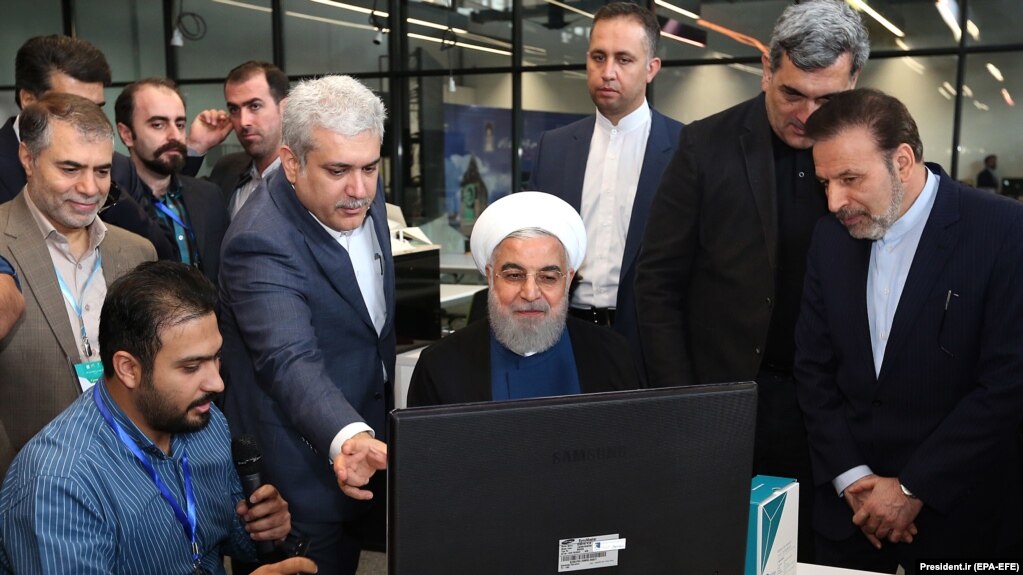
JCPOA; Tehran Loves the Deal But Reduces its Commitments
On the anniversary of the United States withdrawal from the nuclear deal with Iran, aka the Joint Comprehensive Plan of Action (JCPOA), Iran announced that it will gradually reduce its obligations under the agreement until Europe manages to help Iran benefit from the deal by assisting Tehran in selling its oil in the international markets and collecting its oil revenue from foreign banks regardless of U.S. sanctions.
Europe has been trying for a year to facilitate some sort of trade, but Iran’s patience apparently ran thin. Starting from May, Iran reduced part of its obligations in intervals of 60 days.
Disregarding JCPOA commitments, Iran has so far injected gas into its new generation centrifuges, ignored the limit (300 kg) set for stockpiling enriched uranium and increased the level of uranium enrichment from 3.67% to 4.5%. Furthermore, Iran has said it was going to take its 4th step.
Observers have been warning for months that Iran’s breach of its nuclear obligations could result in returning all international sanctions including those imposed by the UN in the years before the 2015 nuclear deal. However, The EU-3, (France, UK and Germany), did not trigger a mechanism that could return all the international sanctions against Tehran for its breach of the terms of the nuclear deal with world powers at the JCPOA meeting in Vienna on December 6.
The decision was made to avoid further complication in the situation regarding Iran’s nuclear deal, said Fu Cong, a Chinese Foreign Ministry official. However, all parties called on Iran to remain in full compliance of the deal.
In the meantime, EU has repeatedly warned Iran that the reduction of its commitments could put an end to the deal, while Iran kept saying that all of the measures it has taken so far in reducing its obligations could be reversed once Tehran’s demands are met.
Escalation of tensions in the Persian Gulf
Tensions in the Persian Gulf rose to a new level as four oil tankers were mysteriously attacked off the coasts of the United Arab Emirates and many international players pointed fingers at Iran as the culprit.
Later in the month, an Iranian oil tanker was seized off the coast of Gibraltar for breaching EU sanctions against Syria by carrying oil to the destination of a Syrian port. Iran denied that the tanker was going to Syria but did not name any other destination. Shortly afterward, Iran’s IRGC forces seized a British oil tanker for alleged violation of international navigation rules. Both oil tankers were released after several weeks of tension between Tehran and London. U.N. Secretary-General Antonio Guterres called for “maximum restraint” in the Persian Gulf region and warned all parties that a new confrontation “would be a catastrophe.
In the meantime, Iran downed a U.S. drone over the Persian Gulf, raising tensions to an extraordinarily high level. The Pentagon said it was moving closer to establishing military escorts for ships in the Persian Gulf in the face of rising threat levels in the area.
As if this level of tension in the region was not enough, things got worse on September 14 with an attack on Saudi Arabia’s oil facilities, which Riyadh and Western capitals have blamed on Iran. Tehran denies responsibility and Yemen’s Iran-aligned Houthi group, which has been battling a Saudi-led military coalition, has said it carried out the attack.
“It is clear to us that Iran bears responsibility for this attack. There is no other plausible explanation. We support ongoing investigations to establish further details,” Britain, France and Germany said in a statement.
The United States will intensify pressure on Iran, U.S. Special Envoy for Iran Brian Hook repeatedly has said in recent weeks.
The attack reportedly halved Saudi Arabia’s oil output but Saudis were able to quickly repair the damage and restore oil production.
However, it took months for Tehran and Riyadh to find an opportunity that allowed for mending their broken ties. How far the conciliatory efforts can go forward, it is not clear as officials particularly on the Iranian sides have not taken any serious step toward a rapprochement.
Iran – U.S. Ties; Heroic Flexibility Under Way?
The main issue in Iran’s foreign policy is its ties with the United States. Many analysts have opined that all of Iran’s problems in the area of domestic and international politics in one
way or another have something to do with its attitude toward the United States.
Chief among Iran’s problems is its degenerating economic situation and that largely is the fruit of years of animosity toward the U.S., which has intermittently cut its oil exports, foreign investments and technological modernization.
During the year, the United States imposed new sanctions on Iran and designated the Revolutionary Guards as a terrorist organization, but U.S. President Donald Trump has repeated several more times that he is ready to negotiate with Iran without any preconditions. Tehran, however, has been sending mixed signals. President Rouhani one day says he wants to talk with America and another day sounds like an uncompromising enemy of the United States. The reason for the change in his rhetoric is more likely Supreme Leader Khamenei’s non-compromising position. He has forbidden any negotiations with the United States at any level.
Nevertheless, few politicians would believe his hard line against America is permanent. Khamenei also believes in “heroic flexibility” under pressure. In fact Khamenei has authored a book with the same title in early 1970s. The book is about Imam Hassan, the second Shiite Imam, who unlike his brother Hussain, the third Imam, was a pacifist man.
So what is behind Khamenei’s hard attitude? Some believe that if the Islamic Republic fully open up to the West, that would be the end of its theocracy.
During the year, quite a few statesmen have offered mediation between the United States and Iran. Two of the most prominent ones were French President Emmanuel Macron and Japanese Prime Minister Shinzo Abe. The latter most recently held talks with Rouhani in Tokyo before a 70-minute conversation over the phone with President Trump.
Macron even came up with a plan to broker a meeting between Iranian and U.S. presidents during the UN General assembly meetings in New York in September.
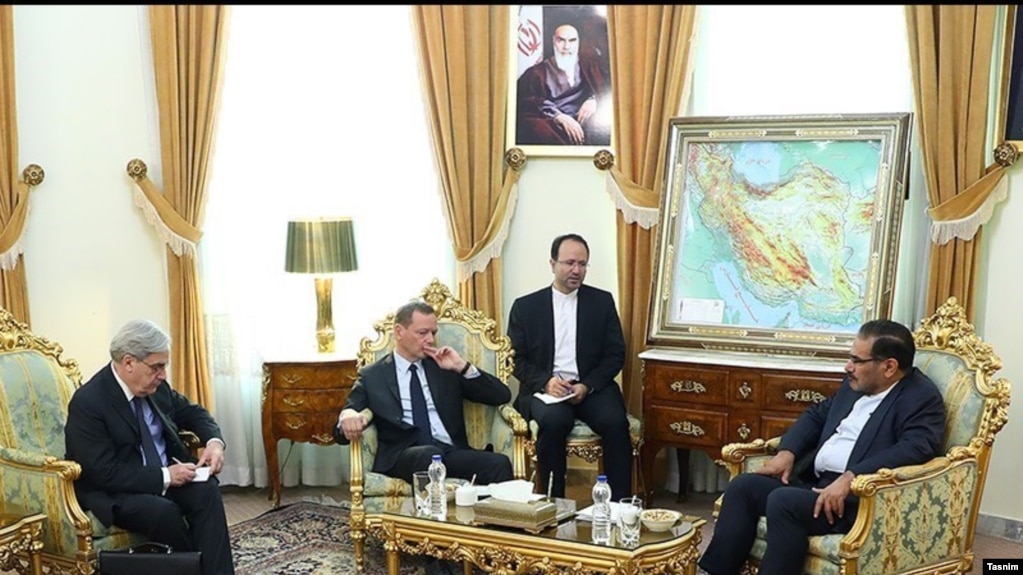
The rest is a story told by the New York Times: The New Yorker magazine also wrote on September 30, quoting diplomatic sources that apparently a deal was made in New York, which hinged on Rouhani, Trump and French President Emmanuel Macron having a phone call
on September 24 to seal a four-point deal. As Macron and Trump waited, Rouhani never emerged from his room. This in effect means no deal was finalized, following which Trump imposed new sanctions on Iran.
Rouhani did try in vain to put the blame on other players but was not able to offer a solid argument in his defense.
Rouhani’s latest meeting with Abe was disappointing in every respect but Rouhani’s aides tried to portray it as a possible breakthrough. Are they right? It is hard to believe.
November, Bloody November
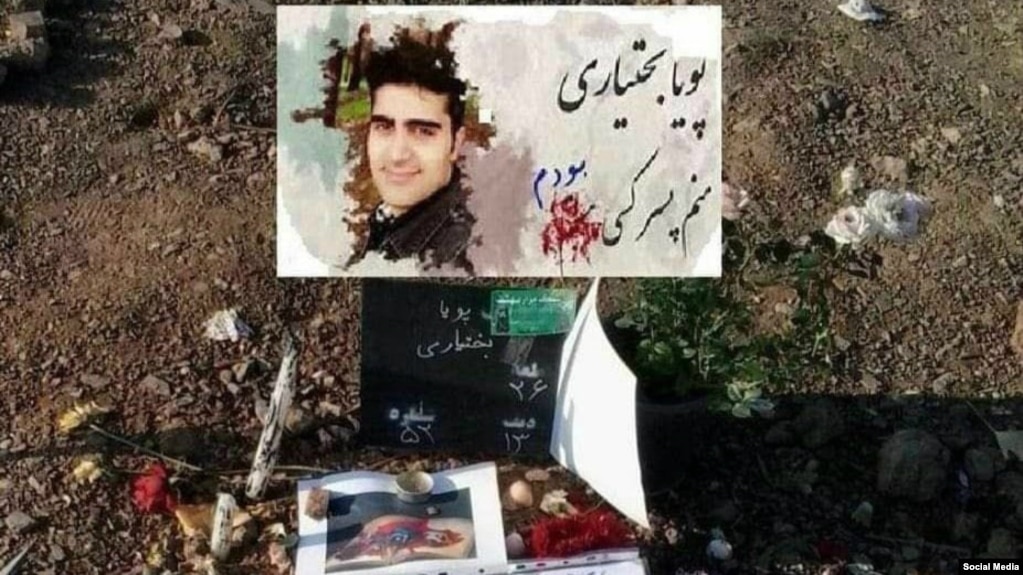
Millions of angry Iranians took to the streets in over 100 Iranian cities and small towns all over the country in protest to a sudden hike in the price of gasoline that was announced at Zero hour on 15 December and people woke up to find out that gas price has risen three-fold.
Overwhelmed by the intensity and massive scale of the protests, Iranian security forces killed hundreds of men, women and children in the streets by targeting their head or heart often at point blank. Even government officials acknowledged that many of those killed and the 8,000 or more who are in jail were not taking part in protests. The security forces targeted everyone in the streets indiscriminately.
Amnesty International says Iranian security forces have killed at least 304 protesters between November 15 and 18, using “lethal weapons” to suppress dissent.
Meanwhile, thousands have been arbitrarily arrested or disappeared after the protests and are feared to have been subjected to torture, while many more have been wounded in the violent and “vicious” crackdown on protests.
Amnesty International‘s latest report on the mid-November protests in Iran which was published on December 16 observed that the detainees include “thousands of protesters as well as journalists, human rights defenders and students, to stop them from speaking out about Iran’s ruthless repression.”
A harder blow to the Iranian government came in a December 23 special report Reuters which said: “After days of protests across Iran last month, Supreme Leader Ayatollah Ali Khamenei appeared impatient. Gathering his top
security and government officials together, he issued an order: Do whatever it takes to stop them.
That order, confirmed by three sources close to the supreme leader’s inner circle and a fourth official, set in motion the bloodiest crackdown on protesters since the Islamic Revolution in 1979.
About 1,500 people were killed during less than two weeks of unrest that started on Nov. 15. The toll, provided to Reuters by three Iranian interior ministry officials, included at least 17 teenagers and about 400 women as well as some members of the security forces and police. The Iranian government challenged the casualty figure by the prestigious news agency, saying that it cannot be fact-checked. Conflicting reports on the number of those who were killed during the crackdown is natural in a non-transparent media environment like Iran. It appears that what has annoyed some Iranian officials is that after a month of media campaign by major Iranian media outlets including the state TV to blame the Rouhani administration for the fatal crackdown, the new report points fingers at Supreme Leader Ayatollah Ali Khamenei.
The Iranian government has never published accurate figures on the number of those killed in the 2017-2018 protests, the 2009 unrest, the 1999 student protest and many other anti-government demonstrations before, after and in between those events.
Adding insult to injury, the government categorically denies responsibility for the murders and charges that demonstrators killed each other, as Interior Minister Rahmani Fazli and many IRGC commanders have said about the mid-November crackdown.
In an early analysis about the November protests, Paris-based Iranian sociologist Saeed Peyvandi wrote: “As far as a large part of the Iranian society is concerned, the country’s numerous problems are the outcome of the inefficiency and incapability of the religious government, widespread corruption, lack of democracy and transparency, a costly and adventurous foreign policy and various forms of discrimination and injustice.”
 Shabtabnews In this dark night, I have lost my way – Arise from a corner, oh you the star of guidance.
Shabtabnews In this dark night, I have lost my way – Arise from a corner, oh you the star of guidance.

